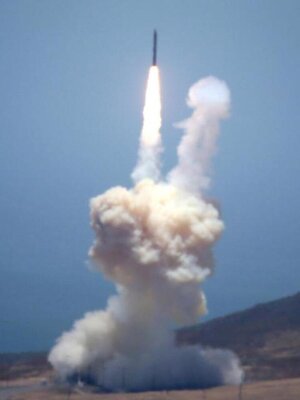
by Frederick Lamb
June 1, 2017
Dr. Frederick Lamb, a Professor of Physics and Astronomy at the University of Illinois at Urbana-Champaign, is currently working at the Kennedy Space Center on NASA’s NICER astronomy mission. In response to Tuesday’s test on the U.S. ground-based missile defense system, Dr. Lamb offered expert commentary on the reliability of such interceptors and discussed North Korea and Iran’s long-range nuclear missile capabilities.
How effective do you think the missile interceptors at Fort Greely would be at protecting the U.S. from a nuclear strike?
These interceptors were deployed to defend the U.S. against nuclear-armed intercontinental ballistic missiles launched from Iran or North Korea. These two threats are different.
Iran does not currently have a significant program to develop intercontinental-range ballistic missiles and is prohibited from ever developing nuclear weapons by the Iran Nuclear Deal, the Nuclear Nonproliferation Treaty, and other agreements that are being rigorously verified by the IAEA.
North Korea has long-range ballistic missiles and nuclear weapon programs that, if successful, would create a serious threat to the United States. These programs have not yet reached this stage. But if they do, the current ground-based midcourse defense system deployed at Fort Greely would have only a very limited capability to defend against such missiles.
Do you think the US should be investing in more missile interceptors?
No additional missile interceptors should be deployed until adequate testing has shown that the deficiencies apparent in previous tests have been overcome, and that the system can perform reliably and effectively under realistic battle conditions.
The 2014 report of the Defense Department’s Director of Operational Test and Evaluation said that “The reliability of the interceptors is low, and the [Missile Defense Agency] continues discovering new failure modes during testing.” Little has changed since then.
To be effective and financially feasible, any midcourse missile defense must be able to discriminate real targets from debris and decoys. This fundamental problem has barely been addressed by the current program, let alone solved. Without a scientifically credible path to effective target discrimination, the midcourse defense program lacks the necessary foundation to be successful.
Any further spending should be focused on fixing the discrimination and reliability problems of the current system, not deploying new interceptors.
What are some of the concerns regarding the reliability of the missile interceptors?
Most of the interceptors that are currently deployed at Fort Greely have a kill vehicle model that failed to intercept its target twice in four attempts. Its last successful intercept was in 2008; the most recent test using this kill vehicle failed. The other interceptors have a newer kill vehicle that failed to intercept its target in two out of three attempts, prior to Tuesday’s test.
The test conducted Tuesday was reportedly successful. If it was, the Missile Defense Agency is making some progress toward developing more reliable and effective interceptors. But this test, like all previous tests, was not conducted under realistic battle conditions. Taking this and the previous failures into account, a successful test today does not change the assessment made by the Director for Operational Test and Evaluation in 2014, that the tests conducted to date are “insufficient to demonstrate that an operationally useful defense capability exists.” A key problem that has never been addressed is the ability of North Korea to defeat this kind of defense using countermeasures, such as decoys.
Do you think North Korea will be able to develop a long-range missile capable of hitting the US within the next five years?
I think it is very unlikely that North Korea will be able to develop a *nuclear-armed* long-range ballistic missile capable of hitting the *continental* United States within the next five years.
The long-range rockets that North Korea has launched or attempted to launch to date do not have the characteristics needed to reliably and accurately deliver a nuclear warhead to a target in the continental United States. I think it is possible that within five years North Korea may be able to develop an inaccurate and unreliable missile that is capable of reaching Guam or islands in the Aleutian chain, but not a missile armed with a reliable nuclear warhead.
An emerging new threat is the development by North Korea of solid-propellant missiles. These could be readily hidden and then brought out and fired within a few minutes, thereby depriving the missile defense system of vital warning time.
For more information on U.S. defense against a nuclear strike from North Korea, see this article by the UK edition of The Sun.